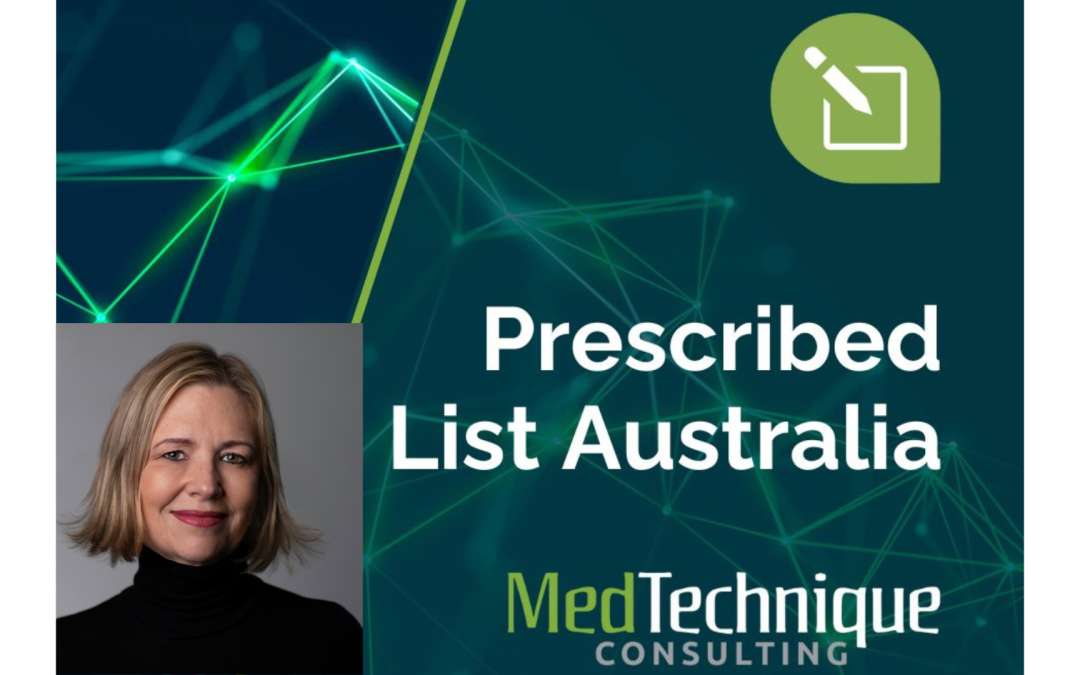The Prescribed List (PL), previously known as the Prostheses List is essentially a list of implantable devices, with some very limited exceptions. Private health insurers (PHIs) must pay a benefit when these devices are used during the hospital admissions of their members. The benefit is over and above whatever the PHI must pay for the admission. Why the PL is mostly limited to implantable devices is based on the origins of the Prostheses List from last century. It was designed to cover standard devices of the day such as joint replacements, heart valves and pacemakers. As technology advanced and the use of single use devices such as ablation catheters and other devices became more prevalent, the PL did not provide coverage for these devices. This meant that some non-implantable devices were too costly to be incorporated into the cost of an admission by hospitals, but not covered by the PL and so were without adequate coverage.
Part C of the Prescribed List (PL)
‘Part C’ of the PL is designed to include devices that are not implantable. Part C was developed in response to years of lobbying by patient groups and industry to the lack of access to cardiac ablation catheters in the private hospital sector, while they were available in the public sector. Currently Part C is limited to insulin pumps, a selection of single use cardiac devices, cardiac loop recorders and home monitoring systems and a urethral ablation device.
Is Your New Medical Technology Eligible for the Prescribed List (PL)?
Medical technology is advancing rapidly and in multiple directions. There is a plethora of new technologies that may result in breakthroughs in the standard of care. These include wearables, artificial intelligence applications and cell technologies. As a reimbursement strategist, I am frequently asked whether these technologies can be included on the PL. It is important to remember that the PL is quite limited in its application. These general limits apply:
- The technology must be delivered during a hospital admission
- The technology must be associated with a Medical Benefit Schedule (MBS) item number
- The device must be therapeutic for a specific treatment and indication, and not purely diagnostic or prognostic
If your device meets these general criteria, it might be eligible for Part C. There are no specific criteria to be included on Part C, other than not meeting the criteria for Part A (implantables) and that the device be no less than clinically effective than an alternative on the PL or an alternative treatment and the benefit amount must be proportionate to the clinical effectiveness. In practice, it is quite difficult to be included on Part C and at present there is no guidance other than applications for Part C will be considered on ‘an exceptional basis’.
The Medical Devices and Human Tissues Advisory Committee (MDHTAC) must recommend that the device be included and seek the Minister of Health’s approval to include on Part C. The MDHTAC has appeared to have been surprised by the number of applications it has received for Part C in the recent application round and have noted that there is no clarity in the minimum level and quality of clinical evidence required or the methods of assessing information. The Department has been tasked with investigating this further so it can be anticipated that there may be more specific guidance forthcoming.
Conclusion
If you believe your device should be considered for Part C, it’s worth applying. However, keep your expectations realistic and ensure you have compelling clinical evidence to support your case for the use of the medical technology.
At MedTechnique Consulting, we have a proven track record of successfully listing hundreds of products on the Prescribed List (PL). As policies continue to evolve and systems are refined, it is crucial to have accurate and timely advice to ensure your products are included without delays.
Why Choose MedTechnique Consulting?
- Expertise: With extensive experience in navigating the Prescribed List process, we understand the intricacies and challenges involved.
- Strategic Guidance: We provide tailored advice to help you meet the specific evidence requirements and streamline your application.
- Comprehensive Support: From initial consultation to final submission, we are with you every step of the way.
Get in Touch
If you need more information about the Prescribed List, assistance with your application or market access for your medical device, please contact us directly. We’re here to answer your questions and provide the support you need to succeed.
Contact and connect with us
- Email Us: : info@medtechnique.com.au
- Call Us: + 61 448 058 600.
- Visit Our Website: MedTechnique Consulting
- Connect with us on LinkedIn: HERE
About the Author
Sarah Griffin, Director of MedTechnique Consulting. Sarah is an experienced health economist, reimbursement strategist, health policy advocate and speaker.
Connect with Sarah Griffin on LinkedIn.
If you would like to learn more about Sarah’s speaking experience for your next event please email: Kim MacDonald, Spindrift Marketing




